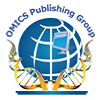Review Article
A Review on Bioactive Porous Metallic Biomaterials
Kun Mediaswanti1*, Cuie Wen1, Elena P Ivanova2, Christopher C Berndt1, François Malherbe2, Vy Thi Hong Pham2and James Wang1
1IRIS, Faculty of Engineering and Industrial Sciences, Swinburne University of Technology, PO Box 218, Hawthorn, Vic. 3122, Australia
2Environment and Biotechnology Centre, Faculty of Life and Social Sciences, Swinburne University of Technology, PO Box 218, Hawthorn, Vic. 3122, Australia
- Corresponding Author:
- Kun Mediaswanti
IRIS, Faculty of Engineering and Industrial Sciences
Swinburne University of Technology
PO Box 218, Hawthorn, Vic. 3122, Australia
E-mail: kmediaswanti@swin.edu.au
Received date June 06, 2013; Accepted date July 04, 2013; Published date July 14, 2013
Citation: Mediaswanti K, Wen C, Ivanova EP, Berndt CC, Malherbe F, et al. (2013) A Review on Bioactive Porous Metallic Biomaterials . J Biomim Biomater Tissue Eng 18:104. doi:10.4172/1662-100X.1000104
Copyright: © 2013 Mediaswanti K, et al. This is an open-access article distributed under the terms of the Creative Commons Attribution License, which permits unrestricted use, distribution, and reproduction in any medium, provided the original author and source are credited.
Abstract
Porous metallic biomaterials have been extensively studied for many bone tissue engineering applications because porous structures provided space for bone in-growth and vascularisation. Improvement on mechanical properties also leads to the increased popularity of porous materials for bone substitute applications, especially for load-bearing implants. However, they usually lack sufficient osseointegration for implant longevity. In addition, their biocompatibility is also an important concern in these applications due to adverse reactions of metallic ions with the surrounding tissues after these metallic ions are released from the implant surfaces. One consideration to accelerate the healing process is surface treatment, including application of bioactive coatings, e.g. hydroxyapatite and biomimetic creation of surface. Surface treatments on biomaterials will determine surface chemistry and topography, whereas these surface characteristics influence osseointegration process.
To respond on the challenges of producing biocompatible and mechanical compatible biomaterials and lack of review studies on surface modifications on porous structures, a comprehensive literature review on surface modifications of various porous metallic materials is presented. This review covers various methods of surface treatment such as biomimetic, electrodeposition, alkali heat treatment, anodization and their effects on mechanical and structural properties which then provided insights into bone implants improvement studies. Biological responses (in vitro and In vivo) of porous material after surface treatment are thoroughly discussed.

 Spanish
Spanish  Chinese
Chinese  Russian
Russian  German
German  French
French  Japanese
Japanese  Portuguese
Portuguese  Hindi
Hindi